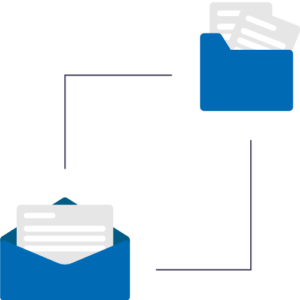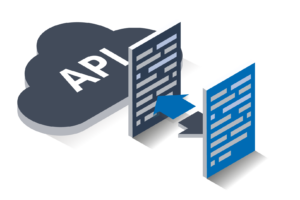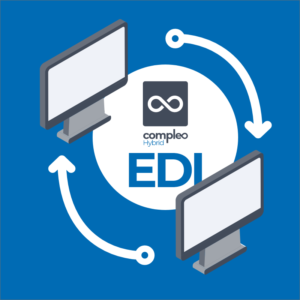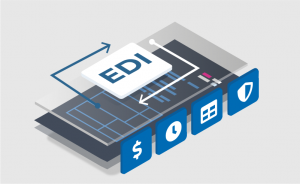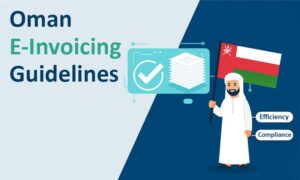To compete in today’s ever evolving business landscape requires effective B2B interconnectivity and communication. This is not only important for facilitating a myriad of essential processes but particularly relevant for financial and other transactions that involve exchanging data between parties. A company’s success and profitability is driven by its ability to interact on this level. No longer a ‘nice to have,’ effective B2B interconnectivity and communication enables a company to operate efficiently, evolve, and grow.
Electronic Data Interchange (EDI) helps facilitate this. It allows organisations to exchange documents and information electronically and automatically over secure standard channels and formats. This enables companies to go paperless –and has been doing so for years! A myriad of examples exist – from electronic purchase orders and invoice exchange to payment and delivery confirmation of payments and deliveries, among many other.
EDI traditionally works in the following manner: documents are prepared and translated into an EDI format, then sent to the recipient and uploaded into the counterpart’s system. The benefits are countless, and include:
- Process automation
- Elimination of human error
- Reduced documentation costs
- Data security
- Simplified auditability
- Improved business lifecycles
- Better management and efficiency
In summary, EDI can make business –and life—easier.
However, EDI adoption is not always driven by internal strategy. The compliance requirements of some operational giants or pressure from large retailers who refuse to do business without a proper solution, can force the need to adopt EDI.
Smaller businesses in particular can find EDI technology expensive and cumbersome to use. Despite being the most widely accepted mode of data communication, EDI has always had a standards-specific process that requires complete compatibility with countless business partners. Putting EDI in place demands cross-platform implementation with numerous potential complexities as communications platforms increase. In addition, as formats and standards for these processes may change over time, older EDI needs to be modernised to become more adaptable.
With all of that said, how do we ensure more cost-effective B2Binterconnectivity and communication? The future lies in marrying traditional EDI processes with newer technologies.
Enter Application Programming Interface (API), a software interface allowing two applications to speak to each other. It is easier to implement and maintain and helps set up seamless integration for less expense.
An API is an extremely reliable and secure way to communicate effectively between two disparate systems. It allows certain applications to access data and services from external entities, such as third-party consumers, internal users, or simply systems searching for data. These are not to be confused with the actual sources of information. Instead, an API is a type of ‘software intermediary’ that acts as a messenger, receiving incoming requests and passing them onto the appropriate system or software which then completes the request. API use is transforming the business landscape. It allows for improved collaboration, secure data transmission, easier integration, improved automation, and enhanced customer experiences, all at a lower cost. APIs are not restricted to where data resides (i.e., on the cloud, on-premises, or on any specific platform), granting users the flexibility to work limitlessly across systems. Thus, API acts as a complex yet independent layer of any business model. Essentially, an API-enabled organisation can expect connectivity to bind all its digitisation efforts together without exposing a system to security threats.
The best of both worlds
EDI and API can complement each other, working seamlessly together with several advantages:
- Easy integration with new and existing systems all within hours, not weeks.
- Reliability and efficiency
- Near real-time feedback from multiple vendors and systems
- Sending receiving data in real-time so you can make critical decisions, improving ROI
- Secure and traceable interactions
- Every API call includes the information necessary to confirm the requester’s identity before sharing information
- Any data exchanged is verified for receipt and logged for future reference
- Easy traceability for any audit or compliance needs
When combined with advanced API capabilities, EDI allows companies to modernise EDI processes to qualify partners faster and secure supply chain workflows. Its greatest value lies in its ability to let organisations remain independent from partner systems and network changes. This can be implemented while still supporting common protocols, secure exchanges, and improved communication.
Symtrax
Symtrax helps your business transition towards the digital future you envision and need! The combined effort of multiple technologies able to work together, albeit on disparate systems, is what truly contributes to an effective (and holistic) digital transformation.
Our document management services use automation to help reduce manual dependencies, making data management easier for both cloud and on-premises systems.
Furthermore, our direct integration with ERPs (API-based) ensures a direct communication channel, delivering automated data conversion that allows you to toggle between the most appropriate formats. Our solution is powered with RPA capabilities and an integrated modern EDI solution for standard-specific document transmission.

